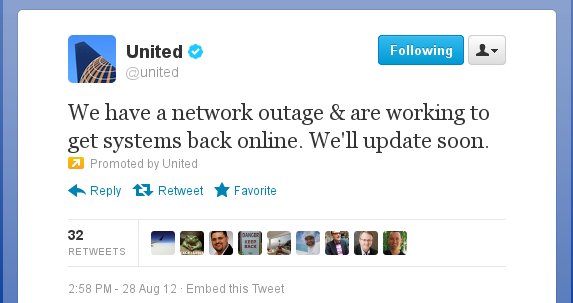Last month, Twitter made a big announcement in regard to its Promoted Accounts service: Tweets and offers from these accounts are now appearing on users’ mobile devices. This means that Twitter is taking one step closer to serving up ads right in front of users and masquerading them as real-friend content.
Facebook has been rolling suggested accounts and sidebar ads into users’ newsfeeds for a while now, so it was only a matter of time before Twitter followed suit. After a quick Beta run, they’re now rolling out the option for all advertisers to display on mobile-only feeds.
Promoted Accounts 101
Before you can grasp the gravity of this change, back up and look at promoted accounts in general. What are they? When Twitter launched Promoted Accounts in 2010, it was on the heels of its Promoted Tweets announcement of that same year. It was easy to wrap your head around a promoted tweet: If an advertiser put money behind a tweet, it was promoted in your sidebar (similar to promoted hashtags). However, promoting on the account level took Twit-vertising to a whole new level.
Now companies could take marketing dollars and throw them behind their entire presence (sort of like a Facebook sidebar campaign). It would show up under the “who to follow” recommendations on users’ Twitter homepages with a “promoted” indication underneath. So even though Twitter was nudging users to like pages with a payment from that account, they were at least warning you that it was a promoted account.
Until now, promoted accounts would only show up under the “who to follow” sidebar on the Twitter desktop website, or under the “Discover” tab on the Twitter mobile app. However, since Twitter recently discovered that 76% of their users access Twitter on a mobile device, it makes sense that they would expand their promoted accounts feature to appear on mobile timelines.
Inline Promotions on Mobile
With so many similarities to Facebook’s marketing tools, it was only a matter of time before Twitter started inserting promoted content right into users’ feeds. After a short beta period, they are now rolling out inline promoted accounts to all advertisers — but only on mobile displays. That means you’ll get your whole page promoted to targeted users and you’ll get a tweet-length sales pitch to show up right in the feed. It will still say “promoted,” but the new placement means users will have more trouble tuning out the ad.
Why would Twitter do that and do it on mobile only? Well, there are a few reasons. In the blog announcement, Twitter cites data that indicates that connecting users to relevant ad content in their social-media channels helps connect them to more valuable services than standard ads. The data here seems feasible because social ads connected with social data make for more socially relevant content (even if it is a little annoying).
It seems like Twitter is taking the risk and rolling it out to everyone on mobile (after a beta test period) because it makes the most sense to try it out on a smaller screen. When users are on the go, they probably aren’t looking at the sidebars as actively. So mobile is arguably the perfect spot to see if inline pitches work for the Twitter platform.
Less Obnoxious Advertising
While Twitter and Facebook have some obvious similarities when it comes to their marketing tools, it seems as though Twitter is also taking notes from both Instagram and Pinterest. Both of these platforms recently released their own marketing tools that are less intrusive and feel more natural than other forms of online advertising.
On Pinterest, the only difference between a regular pin and a promoted pin is the small “Promoted Pin” text listed next to the number of repins and likes the image has. Instagram has launched similarly indiscreet ads. The only difference between a normal Instagram image and an Instagram ad is the word “Sponsored” that appears to the right of the username.
Instagram’s sponsored photos aren’t as smoothly integrated as Pinterest’s, however. It’s extremely confusing when you’re scrolling through your Instagram feed and see a photo of a 2005 part for a Mustang – until you realize the photo is sponsored by a car parts company. Luckily, Twitter’s promoted tweets aren’t as noticeable as not everyone reads every single tweet on their timeline.
Twitter has done a good job taking notes from other social networking sites’ marketing tools, and they’ve implemented the best aspects into their own promotions. It will be interesting to follow the success of their updated promoted accounts and see if the upgrades work in their favor.


Leave a Reply